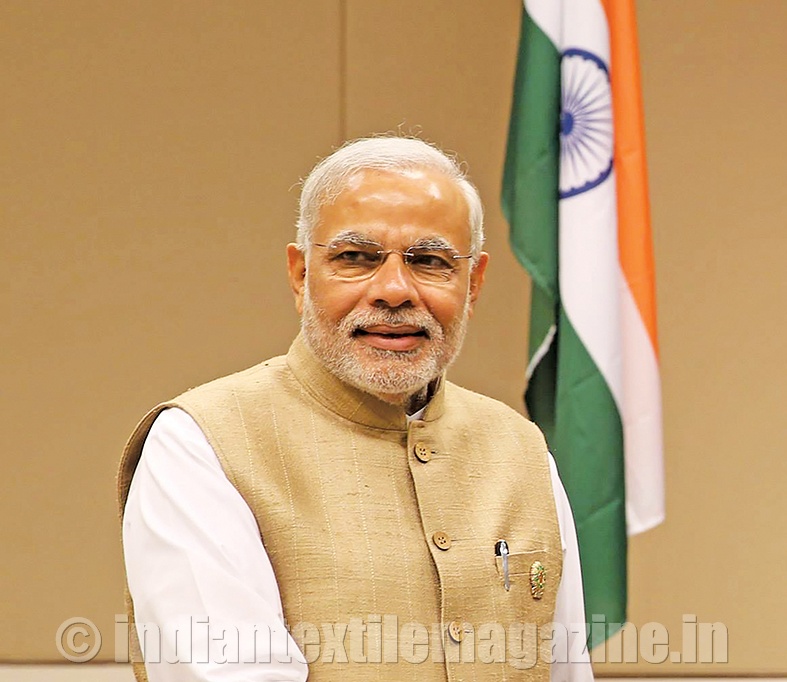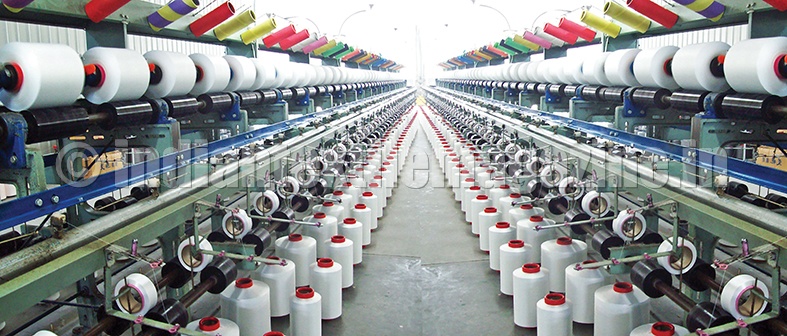Indian manufacturers line up massive investment & expansion plans
It could well be considered the beginning of the Golden Era for the Indian textile industry. The current year and beyond promises to be an excellent period of growth for the industry. The Government led by Prime Minister Narendra Modi has given the much-needed encouragement and confidence to the business community to further invest, expand and grow. In our recent interaction with industry leaders, a sense of optimism and confidence was quite evident.

The Government is expected to announce its new textile policy with an ambitious target of achieving 20 per cent share of the global textile trade and helping the domestic industry attain a size of $650 billion by 2024-25 by focussing on investments, skill development and labour law reforms. The policy blueprint, termed the ‘Vision, Strategy and Action Plan’ for the textiles and apparel industry, lays thrust upon diversification of exports through new products and markets along with increasing value addition and promoting innovation and R&D activities.
The textile industry is expected to attract investment of about $120 billion by 2024-25 and create about 35 million additional jobs in the process. Exports are also expected to rise from the current $39 billion to $300 billion by 2024-25. The action plan notes that attracting the required investment entails ready availability of developed land with adequate infrastructure, skilled manpower and easy connectivity to ports, along with creation of new mega textile parks, lowering the cost of production and logistics, and encouraging new entrants through start-ups as well as FDI.
With the textile industry growth, the textile machinery sector size is also expected to double to Rs. 45,000 crores in the next seven years from the present Rs. 22,000 crores on the back of the new projects coming up and emphasis on setting up textile parks. “The growth in the sector and upcoming new projects, along with the Government initiative to set up textile parks, may boost the textile machinery industry. The market size of the sector is set to double to Rs. 45,000 crores in the next 7 years from the present Rs. 22,000 crores,” the India ITME Society Chairman, Mr. Sanjiv Lathia said.
Seeing the future potential, Indian textile companies have already lined up investments for future capacity expansion. Companies like Trident, Welspun, Nandan Denim, KPR Mills, RSWM, Indo Count, Sutlej, Arvind, Raymonds, Himatsingka, Nitin Spinners and Mafatlals have announced significant investments in areas like home textiles, denim and garmenting.
India has become a dream market for most marketers across many product segments. In textiles and apparel specifically, domestic consumption has grown at over 13 per cent per annum over the last five years and crossed the $60 billion level, fuelled by the demographic advantages of India’s population, increasing urbanisation, growing disposable income and higher marked penetration of organized retail. India’s export of textiles and apparel has also grown at over 11 per cent in the last five years and currently stands at $40 billion – a success but a long way from where China’s industry stands today (just 10 per cent), and nowhere near its potential.
Traditionally Indian textile and apparel manufacturing industries have been cotton focused. Even today, cotton has more than a 60 per cent share compared to 40 per cent share globally. But this scenario is changing fast. Manufacturers, as well as brands, are increasingly looking towards other fibre options, mainly polyester. With the increase in the ‘Value Retailing’ format in the domestic market and rising demand for synthetic fibre-based products from global brands and retailers, demand for polyester is set to grow.
However, India’s downstream industry in textiles and apparels is not well developed, resulting in a weak link in the value chain. Investment is therefore required from international groups, as well as local Indian companies, to adjust the scale, efficiency and sophistication of India’s textile system to match future demand growth.
The Indian textile industry is now going through a consolidation phase. There are now 30 companies with a turnover of more than $200 million, and many of them are registering double-digit growth. There are another 100 companies which are seen as stars of the future. We believe that it is these companies that could attract a host of leading edge, international textile and apparel companies into successful joint ventures. A more experienced and commercially enhanced system can be created in order to successfully compete against China and other Asian nations and drive India’s textile industry forward to reach new heights.
The Indian technical textile industry is expected to grow at a rate of 20 per cent annually to touch $30 billion in the next five years. “In view of the growing demand, the country’s technical textile industry is expected to grow at a rate of 20 per cent annually to touch $30 billion over the next five years,” the Textile Commissioner, Ms. Kiran Soni Gupta, said at the recent Techtextil India show in Mumbai.
The emergence of India as the second largest textile exporter in 2013 has encouraged textile players in the country to widen their production base extensively. In this edition, we have put together some of the major investment and expansion programs by Indian textile companies, some of which have been completed, some in progress and many lined up for the future.
